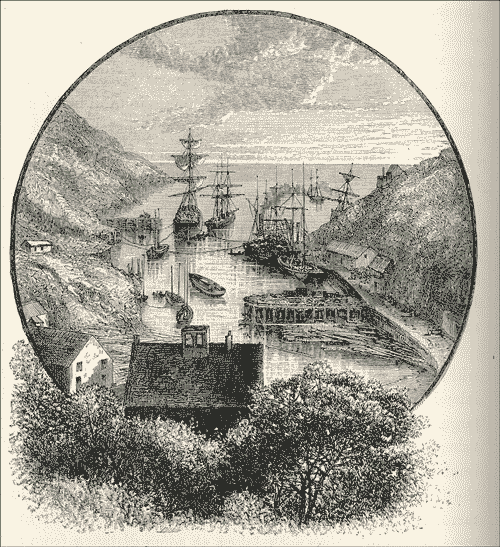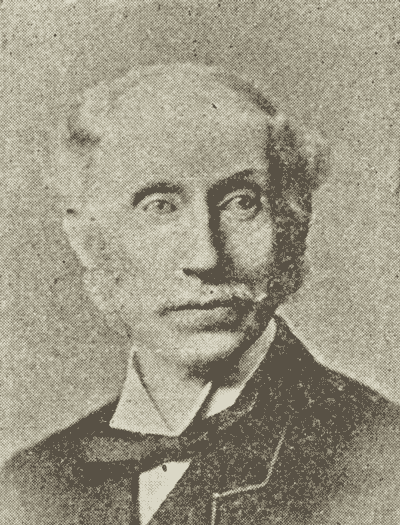Politics of Development: Building the Railway
For much of the 19th and 20th centuries, Newfoundland governments were deeply concerned about economic development. The fisheries seemed unable to produce enough wealth and employment to sustain a growing population. The aim therefore was to develop other, land-based industries which could provide Newfoundlanders with jobs and a better standard of living, and stem the flow of people moving to the mainland on a temporary or permanent basis.
Agriculture Development
At first, the greatest emphasis was placed on agriculture. The government hoped that by building roads and encouraging the clearance and cultivation of land, families would become more economically self-reliant. They would have enough to eat, and would be less likely to apply for poor relief, especially if farming was combined with fishing and other activities. These initiatives were not politically controversial. All political groups and parties, both before and after the grant of responsible government in 1855, supported the promotion of agriculture through support for agricultural societies, the supply of seed potatoes, land-clearing bounties and other means.
Disussion on Railway Construction
The Conservative governments of the 1860s, led by Hugh Hoyles and Frederic Carter, were particularly enthusiastic about agriculture, but were also concerned to develop other economic sectors. Thus the Newfoundland Geological Survey began its work in 1864, and the discovery of copper deposits in Notre Dame Bay caused much enthusiasm. This interest in land-based resources, and the expectation that valuable resources would be found in the interior, stimulated discussion of the possibility of building a railway across the island.

The main arguments in favour of building a railway were linked to economic development. Not only would the construction create jobs, but by providing access to the interior and other areas hitherto difficult to reach (given the absence of roads), the line would encourage lumbering, farming and mining. The railway enthusiasts also placed great faith in the economic potential of the island's west coast (part of the French Treaty Shore), which was thought to have farm land, minerals and forests in abundance. Building the railway became a major plank in the platform put forward by the Conservative leader, Sir William Whiteway, in the 1878 election. Construction began in 1881.
The railway issue, which was highly contentious, caused new political divisions. Those who supported the railway, Conservatives and Liberals alike, clustered around Whiteway and his "Policy of Progress". Those who had a different vision of the colony's future came together in 1882 as the "New party", later becoming the "Reform party", or simply "Tories". Their view was that the hopes and expectations of the railway's supporters were unrealistic and exaggerated. The country's main industry was and would remain the fishery, and it was here that the government should concentrate its efforts, particularly since the fishery in the 1880s was facing a crisis in the markets. To spend millions of dollars on a railway was simply a waste of money which the country could ill-afford. Instead, the government should be doing something about French competition in the fishery, and promoting rural development schemes.
This debate was central to later 19th century Newfoundland politics. The New party was defeated in the 1882 election, in which Whiteway starkly defined the issues as "Progress" versus "Stagnation and Starvation." But his opponents (many of them merchants) regrouped, and by a series of unsavoury maneuvers managed to grab control of the government and win an election (as the Reform party) in 1885. This was their chance to implement an alternative development strategy. However, after a promising start, the Reformers soon lost direction, and even resumed work on the railway.

The 1889 election returned Whiteway to power (as leader of the Liberal party), his slogans being "Vote for the Friend of the Workingman and the Apostle of Progress", and "Vote for Whiteway and $1.25 a day!" - the rate paid for railway labour.
This election ended any further discussion about whether or not a railway should be built. It was now clear that the electorate supported Whiteway's prescription for economic development, and that the representatives of the "old economy" based on fish and seals would have to adjust themselves accordingly. In effect, Newfoundlanders had adopted the conventional wisdom of the day, that steam, railways and opening up new lands would lead to economic diversification and prosperity. It was a bold gamble, with mixed economic and political consequences. For while the railway brought social and economic advantages, its very existence became a political problem, as soon became evident after the completion of the main line in 1897.




